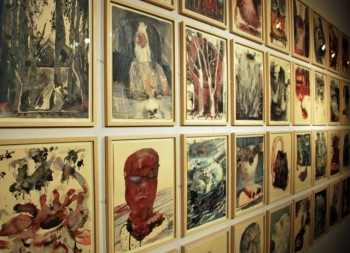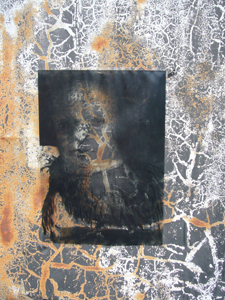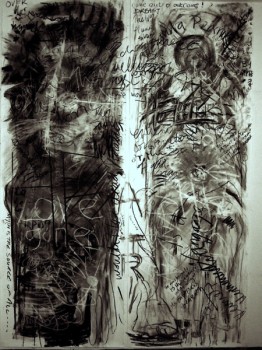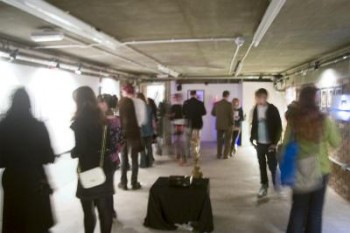Imagined Machines
Regulator included in an exhibition of sketches of mechanical and electronic devices.
10 Sept – 16 Nov 2011.
Opening Saturday 17 Sept 5 – 7 pm
TestBed at Oriel Davies Gallery, The Park, Newtown, Powys, SY16 2NZ
information on new work,
commissions, events
and upcoming shows
Regulator included in an exhibition of sketches of mechanical and electronic devices.
10 Sept – 16 Nov 2011.
Opening Saturday 17 Sept 5 – 7 pm
TestBed at Oriel Davies Gallery, The Park, Newtown, Powys, SY16 2NZ

image courtesy of Brecknock Museum and Art gallery
40 drawings from the Orpheus project were shown at Y Lle Celf, National Eisteddfod Wrecsam 2011.
Gwilym Morus was commissioned as the Art Space Poet at this year’s National Eisteddfod, Wrecsam. One of the ten pieces he responded to in the exhibition was the ‘Orpheus drawings’. His response was in words and music, so as well as the lyrics going up on the wall alongside the work, he also recorded an album. Orffiws is the ninth track on the album: the words are given below, and the album can be heard by following the link to Gwilwm’s website, below.
Orffiws
Ymateb i ‘Orffiws’ gan Penny Hallas
…sef bardd chwedlonol y Groegwyr a rwygwyd yn
ddarnau gan ferched gwyllt y Bacchanalia.
Mae darnau bach ei hunan
ar chwâl ymysg y chwyn –
y bardd anfarwol truan
wedi’i hau fel hadau syn.
Yn ymraniadau amwyll
ei gyflwr chwith caiff fyw,
ag yntau’n gasgliad gorffwyll
o greiriau rhyfedd, gwyw.
Mae bellach yma’n rhythu
lle nad oes iddo hedd,
a’i ffrwythlon ddatgymalu
yn gwrthod iddo fedd.
Gwilym Morus (2011)
Dilyniant yn nhrefn yr albwm lle Troediaf Ymddengys y Llawr
Ewch i www.caneuon.com/babellgelf
Eisteddfod Genedlaethol Cymru Wrecsam a’r Fro www.eisteddfod.org.uk
25 Jun – 16 Jul 2011 5 visual artists to whom drawing is the mainstay of their creative practice.
24 June 7pm Private View opened by Professor Howard Riley, Swansea Metropolitan University
Five dedicated practitioners, each applying their individual intelligence of seeing, but to a common end: the sharing of experiences of the world – perceptual, emotional, and imaginational – through the selection and combination of visual elements; line, tone, shape, texture and colour. Such tangible representations in turn allow us, the viewers, to adopt, adapt our moods, our attitudes towards those experiences being shared, thus realising the potential of one of the fundamental social functions of art: to make the familiar strange – to stretch our perspective on life. Elysium: a state of ideal happiness. How apt!’

29 Jan 2011 ‘ Encounters beyond the page/screen/stage’. A one-day research workshop event and exhibition. University of Exeter, Department of English.
As part of the Orpheus Project, a presentation will be made of film and images by Penny Hallas, script by Lyndon Davies, with music drawn from Gill Steven’s composition ‘Sounds from Solitude’
In November Glasfryn Seminars played host to Border/Lines, a group of poets and academics who come together to discuss literature, critical practice and theory and to explore links, differences and new approaches to an understanding of their relationship.
The chosen text was Maurice Blanchot’s essay The Gaze of Orpheus, and people were asked to respond to this and to the general theme of the Orphic myths. The day commenced with a paper around these topics, by Lyndon Davies, and the rest of the morning and part of the afternoon was given over to discussion.
 During the morning, artist Penny Hallas had created two drawings for the Border/Lines event in her studio upstairs, and people were taken one by one to the studio to record their pre-prepared responses to the Blanchot essay to camera. After each reading the guest was invited to change both drawings, one with a rubber and one with a piece of charcoal. When everyone had done this, people came together to improvise written responses to the day, creating brief sentences and word-patterns which were then torn in half, each part of the sentence acquiring a response and a completion by another of the participants.?Armed with these reconstituted sentences the participants returned to the studio where, with the use again of rubber and charcoal, they performed a mass intervention on the drawings.
During the morning, artist Penny Hallas had created two drawings for the Border/Lines event in her studio upstairs, and people were taken one by one to the studio to record their pre-prepared responses to the Blanchot essay to camera. After each reading the guest was invited to change both drawings, one with a rubber and one with a piece of charcoal. When everyone had done this, people came together to improvise written responses to the day, creating brief sentences and word-patterns which were then torn in half, each part of the sentence acquiring a response and a completion by another of the participants.?Armed with these reconstituted sentences the participants returned to the studio where, with the use again of rubber and charcoal, they performed a mass intervention on the drawings.
The day was documented by use of audio and filmed recordings, as well as by individual written texts which have been uploaded onto a Wiki Site.
Present: Philip Gross, Alice Entwistle, Kevin Mills, Wendy Mulford, Samantha Wynne Rhydderch, Richard Gwyn, Jeremy Hooker, Graham Hartill, Anne Cluysenaar, Lyndon Davies, Penny Hallas
Essex University Conference: ‘Myth, Literature and the Unconscious’
2nd, 3rd, 4th Sept 2010.
As part of the ongoing Orpheus Project, a presentation was made of film and images by Penny Hallas, script by Lyndon Davies, with music drawn from Gill Steven’s composition ‘Sounds from Solitude’. Making of the film was supported by technical wizard Steve Groves.
For more information about the Orpheus Project, click on ‘projects’ under categories.
This Arts Council Wales Research and Development project involves collaboration with poets and writers, Graham Hartill, John Goodby and Lyndon Davies, and musician Gillian Sevens, (Composer, Crwth and Viola player).
The project is an exploration of why the Orpheus myth is still so potent today, informed by the interplay between spoken, musical and visual languages.
Work has focussed on the caving system at Craig Y Cilau National Nature reserve on Mynydd Llangattock, with artwork, films, readings, recordings and crwth playing in and around the caves.
 Some thoughts on Elysium show by Graham Hartill
Some thoughts on Elysium show by Graham HartillWhat else could represent so clearly the idea of spirit, mind, soul, whilst remaining so incorrigibly and bafflingly, a material object? – writes the artist. Bafflingly? I’m grateful to Penny for drawing my attention to this word, its etymology pointing to implications of disgrace and vilification, scoffing; the Norman French ‘baffer’ meant, apparently, ‘to slap in the face’. A baffle is something that changes the course of something, a thought perhaps, or an energy flow. We look at a head, particularly a face, for recognition of an other’s self, of course, but as these paintings indicate, a head may be more akin to a helmet or mask, than to a transcription or emblem of its bearer’s actual life experience. Either way, it’s what we see, what we make, of another, on first encounter at least.
What cultures down the ages have certainly realized is that the head is a locus of power, both spiritual and material; in fact, the head can be seen as the ultimate embodiment of the truth that, to quote the American social theorist Ernest Becker, all power is sacred power; there’s more than an element of ritual sacrifice in the beheading of a king or criminal, or the toppling of a tyrant’s statue, noosed, like Saddam’s or Stalin’s.
It’s not just in the heart of colonial darkness that men have gone head-hunting – it happens in Canary Wharf and Cardiff, and wherever the paparazzi ply their trade. The Society of the Spectacle is a world of recognitions and reflections. It is a metaphor that reaches back to the myth of Osiris and beyond, that is caught in the story of Orpheus, whose severed head went floating down the stream, still singing, just like Elvis’s. The corn god rises to meet his beheading, just like Jesus, caught in Bosch’s painting, still amongst a swirl of animal appetites. Culture depends on this.
We put on our masks with the growth of what we call our personalities, and shape them throughout our lives, or try to; we survive perhaps to the extent that we succeed. Someone said that by 50 or so we’ve all got the masks that we deserve. When, as children, we learn to differentiate I from Other, when we create our first strong subjectivity, our first sentence in fact, which is our striving to act in the world, our first self-consciousness, then we see our heads, our faces, in the world’s reflection. Thus can the head, like Orpheus’s, be regarded as synonymous with utterance. And of course if someone is silent, then it is baffling, fascinating: What are they thinking – of us perhaps? Or what are they dreaming? – which none of us, not even the dreamer herself can understand – see for example Odilon Redon’s dreaming, floating heads.
Penny’s paintings toss up a carnival of mental states or dramas. For me they question any distinction we habitually make between biology, spirit and social power. They come from the same considerations that I suspect she encounters working as a therapist, using art as a space of encounter between participants, some of whom struggle with verbal expression. We see images of dismemberment, of warfare, secrecy, encounters and imprisonments; veils, masks, pedestals, curtains, helmets. For me the idea that any picture holds a mirror up to ourselves is made explicit; all of these heads are mine, living out my life in that peculiarly human state of knowing my self, my face, and what I am – an animal with self-consciousness – from which I make my theatre.
5 October 2009
Graham Hartill’s selected poems, Cennau’s Bell was published in 2005 by the Collective Press and 2007 saw the launch of A Winged Head by Parthian Books). He is Writer in Residence at HMP Parc, Bridgend and teaches creative writing for therapeutic purposes at Bristol University.
email: graham.hartill@tiscali.co.uk
http://www.academi.org/list-of-writers/i/129683/